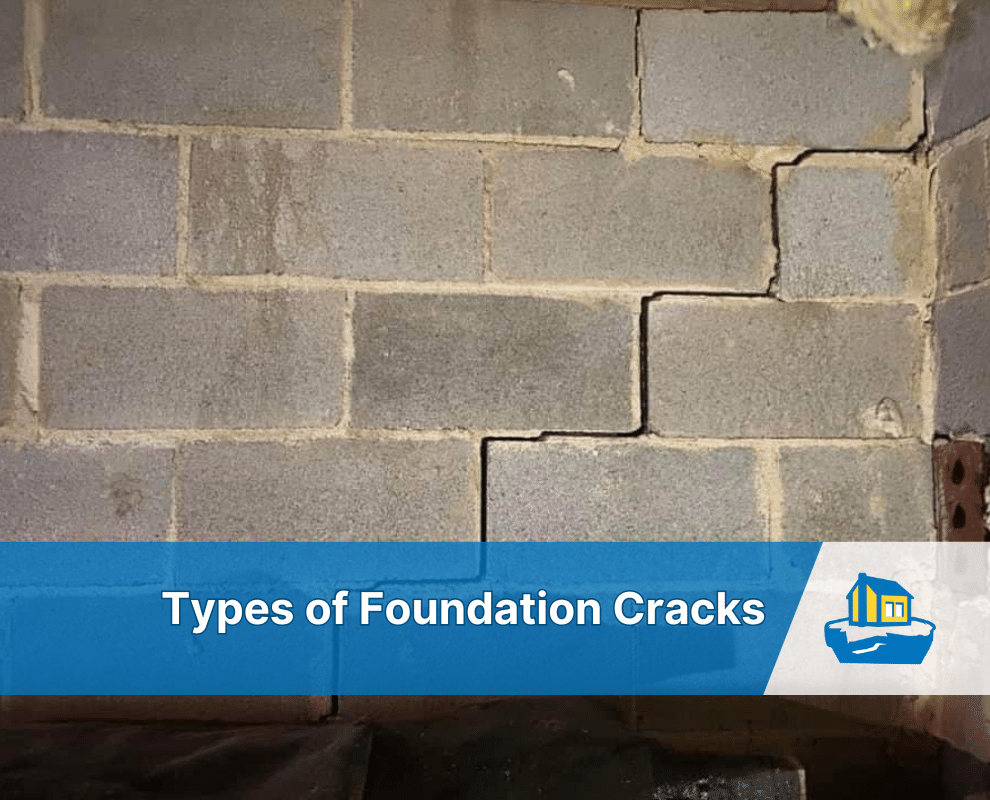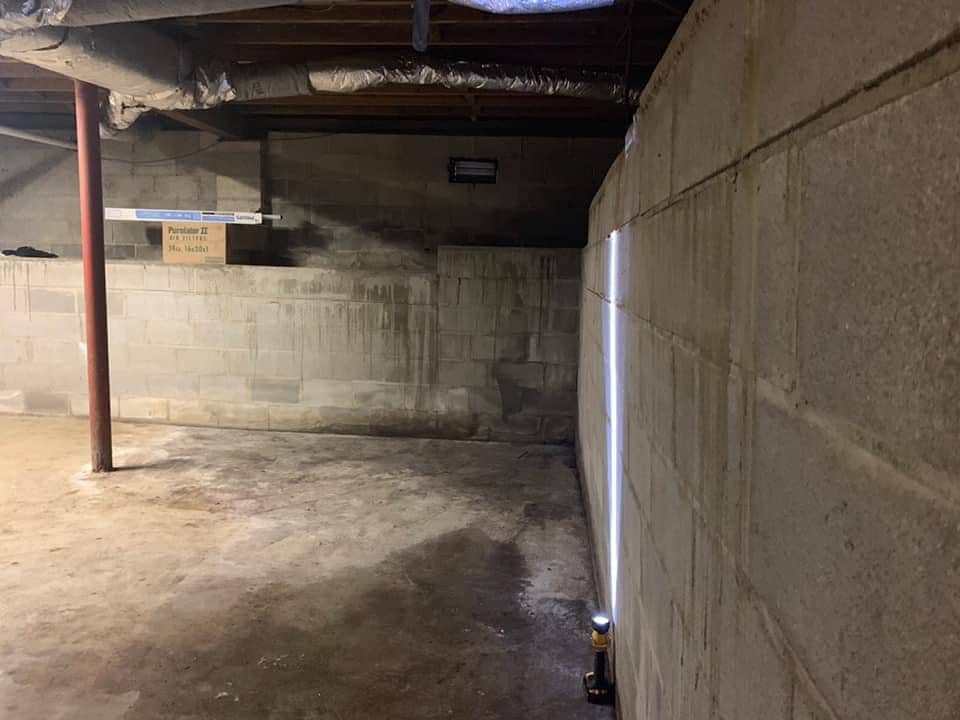4.9 1890+ Google Reviews

If you’ve ever noticed a crack in your wall or foundation, you’ve probably wondered whether it’s just another quirk of your home settling—or a serious structural concern that demands immediate attention. In truth, cracks come in all shapes, sizes, and directions, and not all of them spell doom. By learning how to evaluate house cracks, you can better protect your biggest investment and ensure it stays stable for many years. In this blog post, we’ll break down different types of foundation cracks, what they could mean, and when it’s time to call in the pros. Let’s dive in!
Before we jump into specific crack types, you might wonder why any crack deserves your attention. After all, it’s standard for homes—even brand-new ones—to settle. In short, as the soil beneath a house shifts, the foundation wall moves slightly, causing small cracks to appear in the walls or floors. In many cases, such cracks are harmless and easily repaired.
However, some cracks can be red flags. Large, wide, or oddly shaped cracks can indicate significant structural damage, water infiltration, or serious foundation issues. Even hairline cracks may allow moisture to seep into your basement or crawl space, leading to mold or mildew problems. And let’s not forget that unsightly cracks can affect your home’s resale value. Because of these reasons, understanding what type of crack you’re dealing with is an essential part of responsible homeownership.
All houses settle and crack. These settlement cracks are usually vertical, or near vertical, and very thin, hence the term hairline. You generally don't need to worry about them. Get them patched to stop moisture and monitor them for more cracking. Basically, don't lose any sleep over these.
However, don't confuse these with vertical cracks that get wider at the top. Widening at the top indicates differential foundation settlement, which is a more serious problem.
There is an industry saying that concrete has two properties. It is gray, and it cracks. Concrete shrinkage cracks look similar to settlement cracks and are equally inconsequential. As concrete foundations cure, the outside surface dries and shrinks faster than the core, especially when the concrete mix has excess water. This difference in the rate of shrinkage causes hairline meandering cracks. These cracks are typically harmless but sometimes cause foundation leaks.
The most significant indicator that you're looking at a concrete shrinkage crack is that it is not continuous. Check out the example below.
Now, we are getting into some more serious cracking. Differential settlement cracks occur when there is a difference in the rate at which two or more areas of the house are settling. This causes stair-step cracks in the mortar joints or diagonal cracks in concrete walls. Stair step cracks are more likely to need professional repair, especially if larger than 1/8th of an inch. You will need a foundation repair specialist to evaluate the soil and the cracks to determine the cause, severity, likelihood of continued movement, and repair strategy.
Alright. These are bad news, bears. Horizontal cracks almost always mean you are going to need expensive foundation repairs. They are caused by excessive pressure from the exterior, typically caused by water (hydrostatic pressure).
You should call a foundation specialist when you find a horizontal crack.

I put these into their own category because they are very common here in Richmond. They worry some home buyers, and they are almost always repaired improperly. These cracks emanate outwards from the corner of a window or door in brick siding. They occur when the lintel fails, starts sagging or expanding, and puts pressure on the surrounding brick. Unfortunately, the proper repair for these cracks is total removal and replacement of the lintel. If the brick is only repointed, the cracking will continue and worsen.
Recognizing different types of foundation crack is the first step. Determining the severity of the crack is the next challenge. Here’s how to evaluate their severity:
Measure the Width: The wider the crack, the more attention it demands. Hairline cracks less than 1/16 inch wide are usually minor but anything near 1/4 inch or wider can indicate significant stress.
Check for Bowing Walls: Gently run your hand along the wall where the crack is. If you feel bulging or concavity, this could mean the wall is under pressure, which is more serious than a flat wall with a crack.
Monitor Changes Over Time: The easiest way to keep tabs on a crack is by marking its endpoints and noting the date. Revisit it every few months. If you see it expanding rapidly, branching out in different directions, or forming multiple nearby cracks, you may need an expert evaluation sooner rather than later.
Look for Water Intrusion: Even small cracks can allow water to seep in, potentially leading to moisture damage, mold, or even foundation erosion in the long run. Consider having it sealed if you spot dampness, staining, or musty odors near a crack.
Examine Doors and Windows: If doors become hard to open or close and windows suddenly stick, it might mean the structure is shifting. These signs can often coincide with larger or more problematic cracks.
While a full-blown inspection is best carried out by a professional, you can still take several steps to perform a preliminary inspection and monitor any changes. Here are some quick pointers:
Use a Level: A level can tell you if any wall is bowing. This helps you determine if horizontal cracks might indicate severe pressure.
Test for Moisture: Simple moisture meters, available at most hardware stores, can detect if water is present behind walls or on your basement floor. This can help you identify problem areas that might require sealing or drainage improvements.
So, you’ve got a crack (or several), and you’re not entirely sure whether it’s a fix-it-yourself job or a call-a-pro situation. If any of the following applies, don’t delay in contacting a professional foundation repair specialist or structural engineer:
Professional inspections typically involve more than just a visual assessment. Experts use tools like laser levels, moisture meters, and sometimes soil testing to pinpoint the root cause. In some cases, the solution might be as simple as sealing the crack and improving drainage. Other times, more extensive foundation repair methods—like installing piers or braces—are needed.
Though foundation cracks can appear in any home over time, there are steps you can take to minimize the risk of serious foundation damage:
By being proactive, you can save yourself the stress and expense of large-scale repairs down the road.
Cracks in your home’s walls or foundation might seem like a recipe for panic, but they often serve as a helpful early warning system. With a bit of know-how, you can spot the signs, monitor changes, and decide if a crack is a harmless quirk or a symptom of something bigger. Remember to:
By staying on top of these minor blemishes and catching problems early, you can save yourself from costly repairs and keep your home standing strong. After all, a house isn’t just a building—it’s your home, a space where you make memories, find comfort, and feel safe. Protect it the best you can by keeping an eye on those cracks and acting responsibly when they appear.
Homeownership is a journey that always keeps you on your toes. From routine maintenance to unexpected repairs, there’s plenty to keep track of—foundation cracks can feel incredibly daunting. However, you can approach these issues calmly and confidently with the proper knowledge. Understanding the different types of foundation cracks, their possible causes, and the potential solutions goes a long way in securing your home’s future.
In short, not all cracks are created equal. Some are just cosmetic nuisances, while others demand immediate action. Use the strategies outlined above to evaluate any cracks you come across, keep a close eye on their development, and never hesitate to contact a professional if something seems off. By staying proactive and informed, you’re giving your home the best chance to remain sturdy, dry, and comfortable for many years.